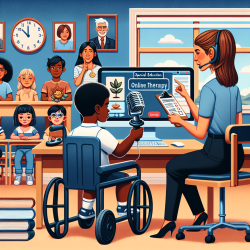In the ever-evolving field of early childhood education, fostering social and emotional learning (SEL) is critical for the holistic development of preschoolers. Research has consistently shown that SEL programs can significantly enhance children's mental health, social skills, and academic success. However, the challenge lies in developing and implementing these programs effectively. This blog post delves into the findings from the research article titled "Integrating Health and Educational Perspectives to Promote Preschoolers’ Social and Emotional Learning: Development of a Multi-Faceted Program Using an Intervention Mapping Approach" and provides actionable insights for practitioners.
Why Focus on Social and Emotional Learning?
According to a global review of epidemiological studies, between 9.5% and 14.2% of children aged five years and under experience serious emotional and behavioral disturbances. In Australia, 13.6% of children aged four to eleven years meet diagnostic criteria for a mental health disorder. These statistics underscore the importance of early intervention to improve both short- and long-term outcomes.
The Intervention Mapping Approach
The research article outlines the development of the Cheshire Social-Emotional Engagement and Development (SEED) Educational Program using the Intervention Mapping (IM) methodology. IM is a systematic framework that guides the planning, implementation, and evaluation of complex health-related behavior change programs. It consists of five key steps:
- Needs Assessment: Conduct a comprehensive assessment to create a logic model of the problem.
- Program Outcomes and Objectives: Define detailed outcomes and objectives mapped against determinants of educator behavior.
- Program Design: Co-design theory-based methods and practical strategies.
- Program Development: Develop the program based on the designed methods and strategies.
- Adoption and Implementation Planning: Create a plan for adoption and implementation.
Practical Steps for Practitioners
Based on the findings from the research, here are some practical steps for practitioners to enhance their skills in implementing SEL programs:
- Conduct a Needs Assessment: Evaluate the specific needs and capacities of your early childhood education setting to tailor the SEL program effectively.
- Set Clear Objectives: Define clear, measurable objectives for both educators and children. This helps in tracking progress and making necessary adjustments.
- Engage in Co-Design: Involve educators, mental health professionals, and developmental researchers in the design process to ensure the program is relevant and feasible.
- Focus on Practical Strategies: Implement practical, evidence-based strategies that can be easily integrated into daily routines.
- Plan for Sustainability: Develop a comprehensive implementation plan that includes ongoing support and training for educators.
Encouraging Further Research
While the Cheshire SEED program provides a robust framework, it is essential for practitioners to stay updated with the latest research and continually refine their approaches. Engaging in further research can help identify new strategies and techniques that can be integrated into existing SEL programs.
To read the original research paper, please follow this link: Integrating Health and Educational Perspectives to Promote Preschoolers’ Social and Emotional Learning: Development of a Multi-Faceted Program Using an Intervention Mapping Approach.










